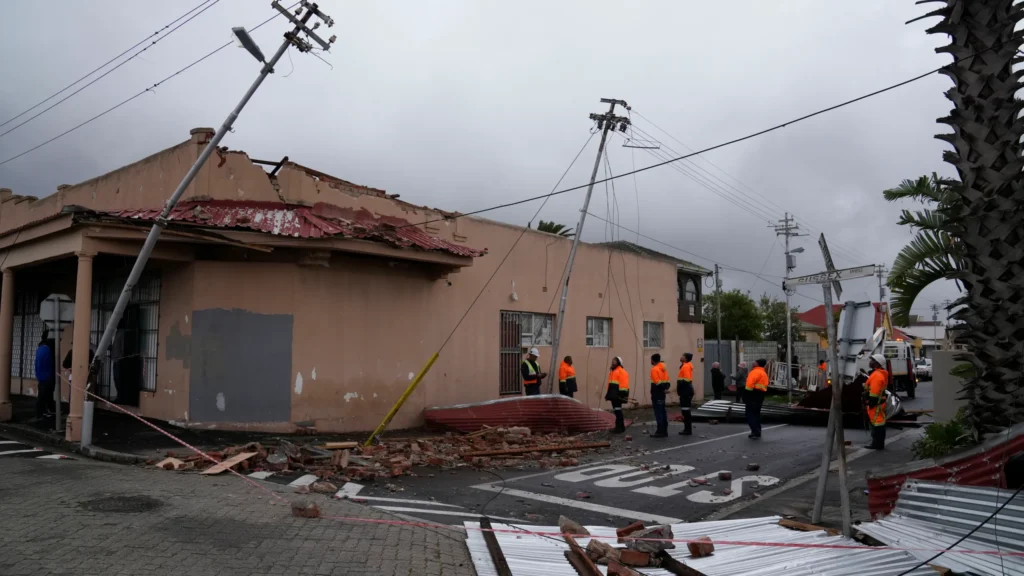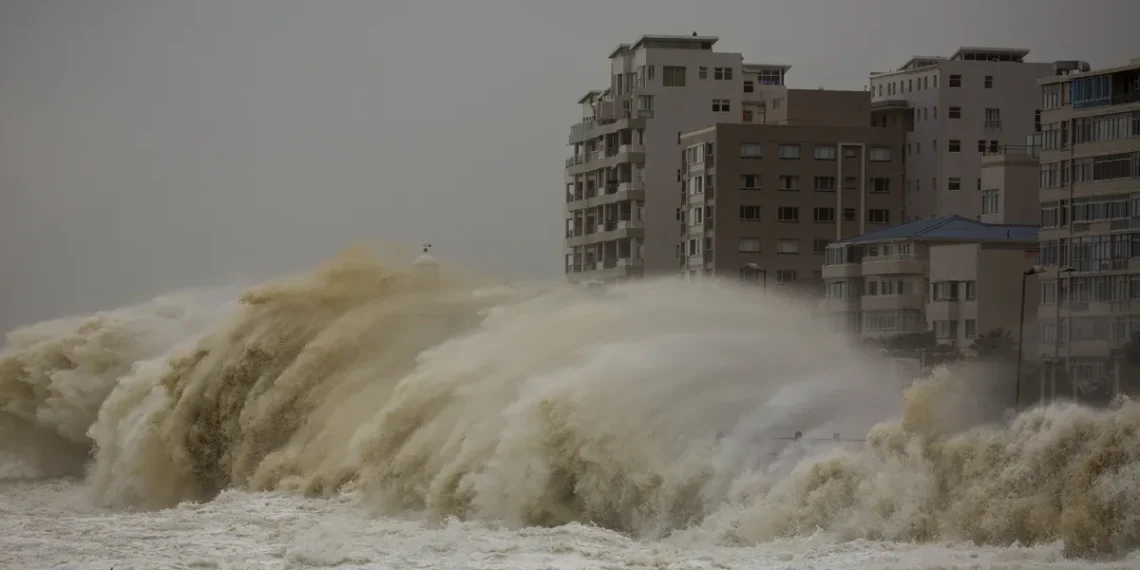A series of relentless storms battered Cape Town and its surrounding areas on Thursday, July 11 tearing roofs off houses and causing widespread flooding.
Authorities report that these severe weather conditions have forced at least 4,500 people to flee their homes, with damage inflicted on approximately 15,000 structures. The turbulent weather, which began a week ago, shows no signs of abating.
Since late last week, multiple cold fronts have swept across the southwestern tip of Africa, delivering record rainfall in certain areas and powerful gale-force winds.
City officials anticipate the adverse weather to persist through the weekend and potentially extend into the following week.
In Cape Town’s Wynberg neighborhood, the aftermath of the latest storm was evident on Thursday morning. Powerful winds had stripped roofs off buildings, wrecked parts of houses, and toppled electricity poles, leaving a trail of destruction in their wake.
Cape Town’s Disaster Operations Centre worked tirelessly through the night to assist residents in distress.
“At least 4,500 people were displaced and 15,000 structures damaged in and around Cape Town and the wider Western Cape province before the latest storm Wednesday night, and those figures were expected to rise,” the city reported.
JP Smith, a member of Cape Town’s mayoral committee for safety and security, detailed the extensive relief efforts underway. Over the past two days, the city and various non-governmental organizations have distributed more than 36,000 meals and 6,000 blankets to those affected.
The brunt of the homelessness crisis has hit the impoverished informal settlements on Cape Town’s outskirts, where makeshift metal and wooden shacks offer little resistance against the onslaught of strong winds and flooding.

In response to the crisis, schools in Cape Town and surrounding regions, including Stellenbosch — renowned for its vineyards — were closed.
Earlier in the week, snow lined the streets of Stellenbosch, an unusual sight attributed to the extreme cold fronts moving in from the Atlantic Ocean.
Cape Town Mayor Geordin Hill-Lewis confirmed that three major rivers in the province had overflowed.
Provincial disaster management services have ordered evacuations in some areas, including the agricultural region of Citrusdal and parts of the wine-growing region near Stellenbosch, about 30 miles (48 kilometers) inland from Cape Town, due to severe flooding.
To mitigate further damage, authorities are contemplating the controlled release of water from certain dams as a “precautionary measure,” as stated by the provincial government.
Unusual Weather Pattern
Cape Town and other areas along South Africa’s southwest coast frequently experience cold fronts during the winter months, which typically bring heavy rain and strong winds.
However, the occurrence of multiple fronts in quick succession is unusual and has exacerbated the current crisis.
The South African Weather Service has issued a high warning for the Western Cape region, predicting extreme conditions and potential flooding in other parts of the country as well.
The coastal province of KwaZulu-Natal and the populous Gauteng province, home to Johannesburg, are also at risk.
KwaZulu-Natal, in particular, has become increasingly prone to flooding, which has led to significant damage to homes and infrastructure, and in some cases, fatalities.
As Cape Town grapples with the ongoing storms, the city’s resilience and communal efforts will be crucial in overcoming this period of extreme weather and rebuilding the lives and homes of those affected.
READ ALSO: Bawumia Challenges Mahama to Live Presidential Debate





















